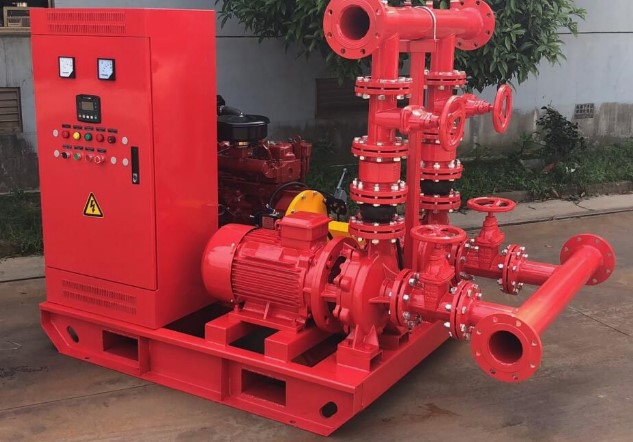Learn why fire pump training is crucial for fire safety professionals. Discover key skills, best practices, and the impact of proper training in emergencies.
The Importance of Fire Pump Training: A Guide for Fire Safety Professionals
Fire safety isn’t just about extinguishers and alarms—it’s about understanding the systems that can save lives. Among these, fire pumps play a critical role. But here’s the thing: without proper training, even the best fire pump can fail when it’s needed most. Imagine responding to a fire, relying on the pump, and it doesn’t perform as expected. That’s a disaster waiting to happen.
This is where fire pump training comes in. It’s not just a technical requirement—it’s a necessity for every fire safety professional. Let’s break down why this training is essential and what it involves.
Why Fire Pump Training Matters
1. Ensuring Equipment Reliability
Fire pumps aren’t everyday household appliances. They’re sophisticated machines designed to maintain water pressure in a fire protection system. If a fire pump malfunctions, firefighters may not get the necessary water flow to control a blaze. Proper training ensures that safety professionals can test, troubleshoot, and maintain these pumps effectively.
2. Preventing System Failures
A fire pump that isn’t properly maintained can cause system-wide failure. Common issues include clogged intake valves, worn-out seals, and electrical malfunctions. Training equips fire safety personnel with the knowledge to detect these problems before they lead to failure during an emergency.
3. Meeting Legal and Compliance Standards
Fire codes and standards, such as those from the National Fire Protection Association (NFPA), require routine inspection and testing of fire pumps. A well-trained fire safety professional understands these regulations and ensures compliance, reducing liability risks for building owners and fire departments.
4. Increasing Response Efficiency
During a fire, every second counts. A trained professional can quickly assess a pump’s functionality, troubleshoot minor issues, and get the system running at full capacity. This efficiency can make a critical difference in controlling and extinguishing a fire before it spreads.
5. Reducing Fire-Related Damage and Loss
Fires cause billions of dollars in property damage every year. Functional fire pumps significantly reduce the extent of fire damage by ensuring a steady water supply. Trained professionals know how to operate these pumps effectively, minimizing losses and protecting lives.

Key Components of Fire Pump Training
So, what does fire pump training actually cover? It’s a mix of theory, hands-on practice, and scenario-based learning. Here are some key components: Read More>>>
1. Understanding Fire Pump Types
There isn’t just one type of fire pump. Training covers:
- Centrifugal Pumps – The most common type, used in high-rise buildings and industrial facilities.
- Positive Displacement Pumps – Used in special applications where high pressure is needed.
- Diesel vs. Electric Pumps – Learning when to use each type and how to maintain them.
2. Routine Inspection & Maintenance
A neglected fire pump is a useless fire pump. Training includes:
- Checking for leaks, rust, and mechanical wear.
- Testing pump performance under different pressures.
- Verifying fuel supply for diesel-driven pumps.
3. Hands-On Testing & Operation
The best way to learn is by doing. Fire pump training includes practical drills where professionals:
- Start and stop fire pumps under emergency conditions.
- Adjust pressure settings for optimal performance.
- Simulate real-world fire scenarios to test reaction time and efficiency.
4. Troubleshooting Common Issues
What happens if a fire pump doesn’t start? Training prepares professionals to:
- Identify electrical faults and reset system errors.
- Clear intake blockages and adjust flow rates.
- Handle cavitation issues that reduce pump effectiveness.
5. Compliance with NFPA Standards
Fire pump training includes a deep dive into NFPA guidelines, such as:
- NFPA 20: Standards for the installation of fire pumps.
- NFPA 25: Inspection, testing, and maintenance of water-based systems.
Real-World Scenarios Where Training Makes a Difference
Case Study 1: A High-Rise Fire Emergency
In a recent incident, a fire broke out on the 12th floor of a residential building. The building’s fire pump failed due to a clogged intake valve. Fortunately, a trained fire safety officer on-site identified the issue within minutes, cleared the blockage, and restored water pressure—preventing the fire from spreading further.
Case Study 2: Industrial Fire in a Warehouse
A warehouse storing flammable materials caught fire, and firefighters relied on an on-site fire pump to control the flames. Because the pump had been properly maintained and regularly tested, it delivered a steady water supply, preventing the destruction of millions of dollars in inventory.
How to Get Proper Fire Pump Training
If you’re in fire safety, you can’t afford to skip fire pump training. Here’s how to get started:
1. Enroll in Certified Training Programs
Look for courses offered by fire safety organizations, firefighting academies, or technical institutes. The NFPA, local fire departments, and private training providers all offer excellent programs.
2. Participate in Hands-On Drills
Theoretical knowledge is great, but nothing beats hands-on experience. Engage in fire safety drills that include fire pump operations and troubleshooting exercises.
3. Stay Updated with Industry Standards
Fire safety technology evolves, and so do regulations. Keep up with the latest NFPA updates, attend workshops, and read industry publications to stay informed.
4. Conduct Regular On-Site Training
If you manage a fire safety team, make training a routine. Schedule monthly or quarterly fire pump testing sessions and encourage team members to practice operating the equipment.
Final Thoughts
Fire pump training isn’t just another certification—it’s a lifesaving skill. Whether you’re a fire safety professional, building manager, or first responder, understanding how to operate and maintain fire pumps is critical. Fires don’t wait for untrained hands; they demand expertise and quick action.
So, are you ready to take your fire safety skills to the next level? Sign up for a fire pump training program today, and ensure that when the moment comes, you’re fully prepared to handle it. Let’s make fire safety smarter, stronger, and more reliable—one trained professional at a time.